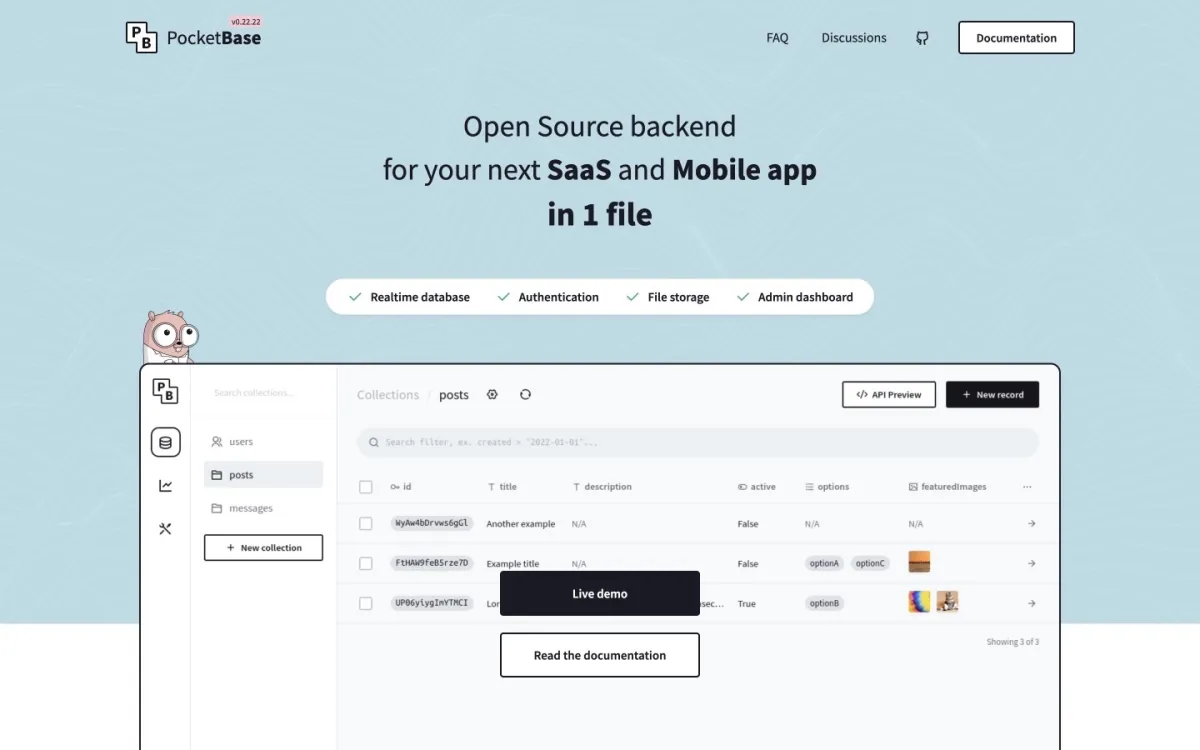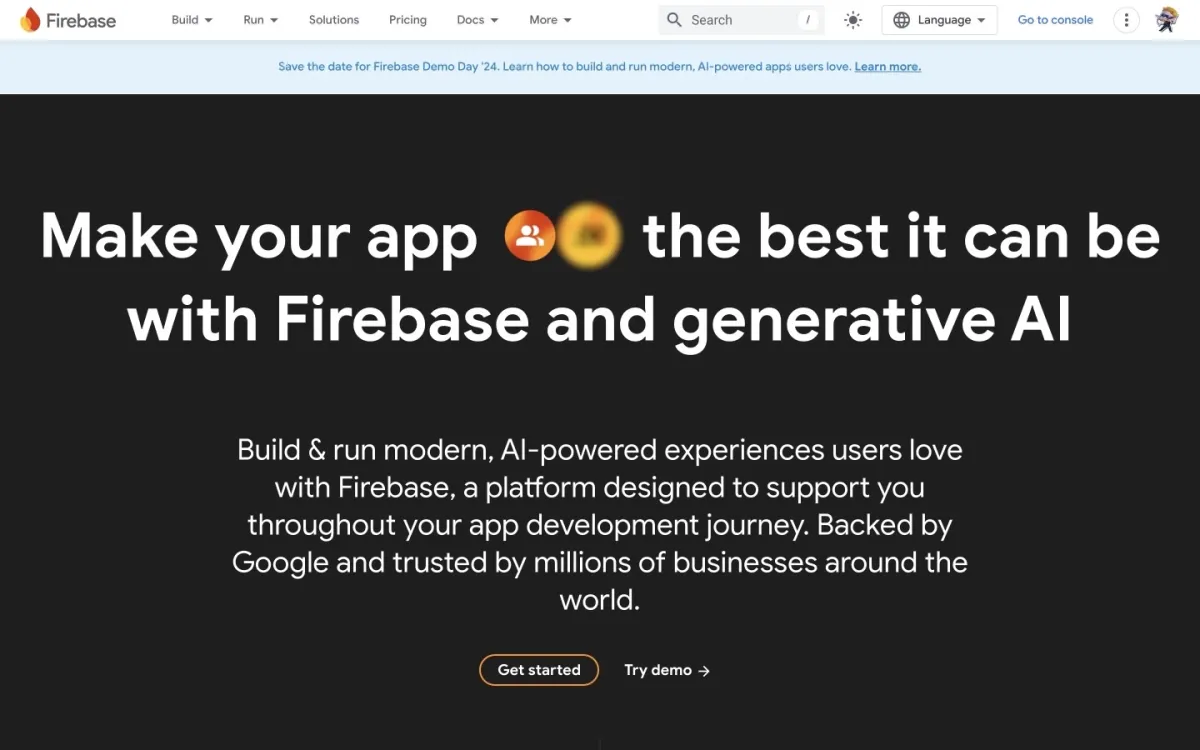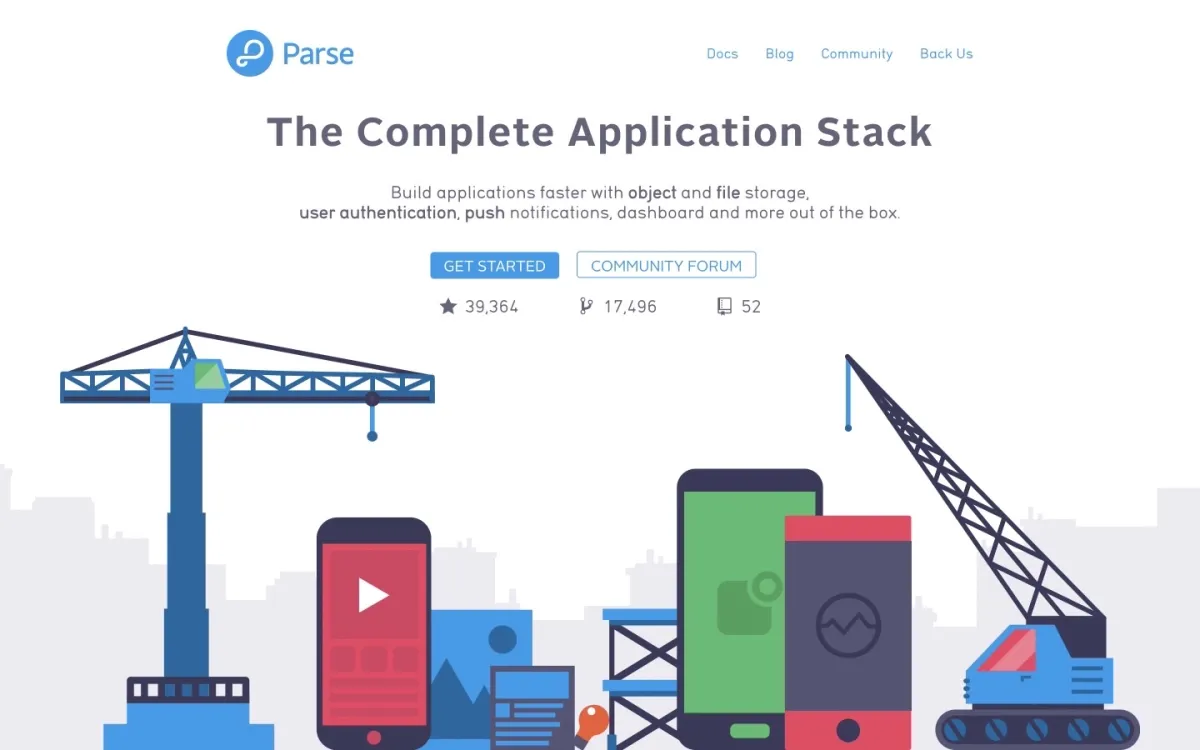7 Best Backend as a Services
A curated list of free, open source and paid backend as a services, ranked based on relevancy and feature completeness as a backend as a service
Pocketbase #1
A simple yet powerful open-source BaaS solution that combines a real-time database, user authentication, and file storage into a single package for rapid application development

PocketBase is an open-source backend-as-a-service (BaaS) designed to facilitate fast application development with minimal overhead. It provides a real-time database, user authentication, and file storage, allowing developers to focus on building their applications without the complexities of traditional backend management. With its lightweight architecture, PocketBase can be easily deployed on any server, offering flexibility and scalability for various projects.
- Rapid Prototyping: Quickly build and test application ideas without complex backend setup.
- Real-Time Applications: Create collaborative apps with live data updates.
- Small to Medium Projects: Ideal for projects that require a lightweight backend without extensive infrastructure.
Supabase #2
A developer-friendly platform that provides a suite of open-source tools for backend development, including PostgreSQL database, authentication, and real-time capabilities

Supabase is an open-source backend-as-a-service (BaaS) that empowers developers with a PostgreSQL database, real-time data sync, and authentication out of the box. It offers SQL-based storage, allowing developers to use familiar SQL commands while benefiting from Supabase’s real-time API, enabling seamless updates across clients. With its authentication service, Supabase supports multiple authentication providers, making it simple to implement secure user management for web and mobile applications.
- SQL-Based Projects: Ideal for projects requiring relational database structure.
- Real-Time Applications: Build collaborative apps, chats, and live data dashboards.
- Open-Source Development: Suitable for developers preferring open-source solutions.
Appwrite #3
A developer-focused backend-as-a-service (BaaS) solution providing core APIs for authentication, database, file storage, and server-side functions

Appwrite is an open-source BaaS designed to help developers manage core backend functions such as user authentication, database management, and file storage without needing to set up extensive infrastructure. Built for both web and mobile applications, Appwrite supports a variety of front-end technologies and offers a self-hosted environment for greater data control. Its modular, RESTful API architecture allows developers to efficiently integrate key backend functionalities, making it easier to create robust, scalable applications.
- Privacy-Focused Applications: Ideal for apps needing strict data control and compliance.
- Custom Backend Logic: Build scalable server-side functions for complex workflows.
- Self-Hosted Projects: Suitable for organizations requiring in-house backend hosting.
Firebase #4
A robust BaaS platform that offers a suite of tools and infrastructure for building, testing, and scaling applications

Firebase is a cloud-based platform by Google that supports app developers with powerful tools to manage the backend of their applications without needing extensive infrastructure. Its features include a real-time database, user authentication, and cloud storage, providing a scalable solution for data management, file storage, and user management. With integrated analytics and performance monitoring, Firebase gives developers valuable insights into user behavior, helping them improve app performance and engagement.
- Mobile & Web App Backend: Simplify backend management for mobile and web apps.
- User Authentication: Quickly implement secure user login across apps.
- Real-Time Collaboration Apps: Create chat, gaming, or collaborative tools with real-time updates.
Parse #5
A flexible, scalable, and developer-friendly backend platform that simplifies application development by providing robust server-side infrastructure and data management

Parse is an open-source backend framework that enables developers to rapidly build and deploy mobile and web applications by providing a comprehensive set of server-side services. It abstracts complex backend development tasks, offering easy-to-use data storage, user authentication, and cloud function capabilities.
- Mobile Application Development: Rapid backend setup
- Prototype Creation: Quick server-side infrastructure
- Scalable Web Services: Flexible backend management
Directus #6
A backend solution that transforms SQL databases into a no-code, API-driven CMS for managing data, content, and user access with ease

Directus offers a unique, unopinionated approach to managing SQL databases, allowing users to retain their custom schemas while benefiting from a no-code data studio and robust API support through REST, GraphQL, and WebSocket. With role-based access control and real-time updates, Directus adapts to complex project needs while ensuring a highly customizable experience.
- Content-Rich Sites: Suitable for managing extensive media and user-generated content.
- Enterprise Applications: Scalable backend solution for large corporations.
- E-commerce Applications: Provides flexible product and inventory management.
Sanity #7
A powerful and customizable content management solution that empowers teams to create, manage, and deliver engaging digital content with ease

Sanity is a robust and versatile content platform that enables teams to build and manage digital experiences with exceptional control and flexibility. As a headless CMS, Sanity separates content from presentation, allowing developers to leverage their preferred front-end technologies while content editors maintain complete control over the content.
- Enterprise websites: Sanity's scalability and flexibility make it an excellent choice for building and managing large-scale, complex websites.
- Headless e-commerce: Sanity's API-driven approach allows for the efficient integration of content and commerce functionality.
- Omnichannel content delivery: Sanity's headless architecture facilitates the distribution of content across multiple channels and platforms.
 Made by
Made by